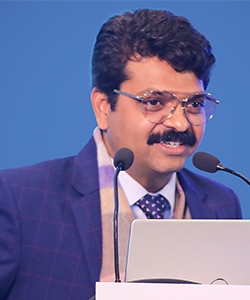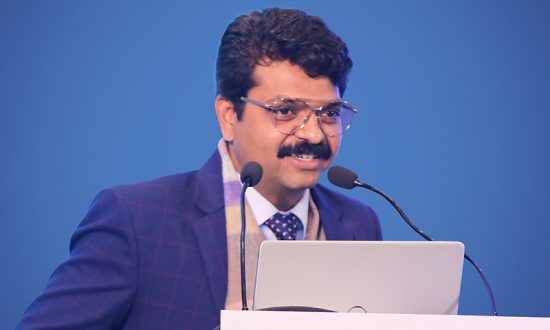Kamal Narayan Omer founded IHW Council health initiatives in 2014 that sought to work aggressively towards finding sustainable, affordable and effective solutions in Indian healthcare. Even as the healthcare scenario in India was witnessing a rapid change, there remained a major void for platforms that could offer viable and influential forums for a healthy multi-stakeholder discourse on India’s healthcare needs and policy. IHW Council initiatives have been working to fill this void through a series of initiatives over the past half a decade. IHW Council is now recognised by the Government of India as a start-up for social impact.
After five months into the pandemic, it is evident that the crisis has also brought changes, forced by the infectious nature of the virus and lockdown to control its spread. Some of these changes were long overdue; however, some of the changes, such as social distancing norms, increased focus on hygiene and sanitisation, etc. have increased the list of regulatory norms to adhere to. There is no vaccine or medicine for coronavirus yet, which makes it likely that these changes are going here to stay.
Continuity is the name of the game
The sudden nature of the coronavirus pandemic abruptly disrupted the normal flow of healthcare management and delivery. Hospitals ceased OPD operations, elective surgeries were put on hold and managing chronic diseases became a challenge as patients feared getting an infection in the hospital setting and many could not access transport needed to go to a hospital in case of an emergency. Without an alternative, this could have meant innumerable deaths and aggravated disease conditions. As a result, hospitals were impelled to bring in methods to address the concerns of their patients. Few of them are going to stand the test of time.
Telemedicine and digital healthcare delivery: Though the first telemedicine facility was launched in India in March 2000, it took a pandemic 20 years later for the healthcare providers to ramp up its usage. Every effort should be made to continue this momentum as telemedicine brings a host of benefits, mainly cost saving on transportation and no need to bring patients to the hospital, thereby reducing their chance of getting exposed to the virus. The National Digital Health Mission, launched by the Prime Minister on Independence Day, will go a long way to drive this change. The well-coordinated mechanism of being able to access all the information at one place and available to all possible stakeholders ups the healthcare game manifold and is likely to boost the culture of teleconsultation, a critical healthcare lesson learnt during the pandemic. It will also save time otherwise spent in the waiting room and registration and billing counters, ensure transparency on financial activity and delivery of medicines from as per the prescription — the other benefits of widespread adoption of telemedicine. However, according to the Internet and Mobile Association of India (IAMAI), as of March 2019, India has 385 million active internet users above the age of 12. Still, internet penetration was a modest 36%, and only 28% of females in rural India have internet access. Addressing this enormous geographical disparity will be crucial in the coming days.
Use of AI to reduce human interaction: In the past decade, the world has made considerable progress in adopting artificial intelligence (AI) to deliver healthcare services, and India is not much behind. In the event of this pandemic, AI has been crucial to reducing human interaction and chances of an infection. Globally, AI has been exceptionally accurate in predicting susceptibility to lung infections, especially in newly infected COVID-19 patients, and AI-based models have helped identify patients who are more likely to develop severe respiratory issues due to the coronavirus. AI is likely to play an important role in the race towards finding a vaccine – it helps in identifying which viral epitopes can be targeted for vaccine development.
Primary care to attract more attention: That there is no alternative to preventive and promotive care is one of the biggest lessons of the pandemic. This, we may hope, should bring back the focus on improving the primary care infrastructure, especially in tertiary and satellite towns and rural areas. A robust primary healthcare system will ensure that in the event of another outbreak like coronavirus, such centres could first diagnose any patient showing signs of any viral fever and thus speed up ‘test, trace, treat’ effectively. A well-oiled primary healthcare system will also play an important role in creating awareness and immunising people in a community.
Adherence to safety and hygiene guidelines: This is one aspect of healthcare delivery that was neglected for a long, long time. However, the pandemic has ensured these norms are followed just right. The practice has percolated in non-medical settings and in families as well, where an increased focus on hand hygiene may have a positive impact on other infectious diseases as well.
More About Kamal Narayan Omer
 Kamal Narayan Omer is a passionate writer with a strong desire to bring about a positive change in society. Kamal started his career as a journalist with leading English newspaper Hindustan Times. He later worked with leading wire agencies United News of India and Press Trust of India where he reported on a wide series of sensitive subjects including the dismal reach of healthcare among Indian masses. His time in journalism also aroused in him a deep interest in the large and rapidly changing field of communication.
Kamal Narayan Omer is a passionate writer with a strong desire to bring about a positive change in society. Kamal started his career as a journalist with leading English newspaper Hindustan Times. He later worked with leading wire agencies United News of India and Press Trust of India where he reported on a wide series of sensitive subjects including the dismal reach of healthcare among Indian masses. His time in journalism also aroused in him a deep interest in the large and rapidly changing field of communication.
After a stint in Financial Chronicle newspaper, Kamal decided to turn entrepreneur and co-founded Teamwork Communications Solutions Pvt Ltd. in 2009. Within a decade of starting up, Teamwork Communications has already made a name for itself as a multi-faceted communications agency that designs versatile and effective communication campaigns and solutions for individuals, healthcare organisations, government bodies as well as private companies.


